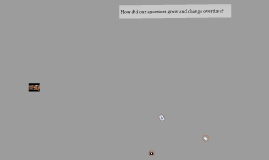Fire presentation
Transcript: 10s and 18s in Wildfire Behavior USGS "Wildfires are a growing natural hazard . . . posing a threat to life and property. . ." America's history of "[f]ire suppression [will] lead to more severe fires due to the buildup of vegetation, which creates more fuel." USGS Culdesac region Pic 5 Night 22. http://www.gehotshots.org/indian_fire/indian_fires.html Pic 3 10. http://gatley.blogspot.com/2008/01/night-photography.html Pic 6 Pic 10 Begin Fireline At Anchor Point Mount Wilson northeast of Los Angeles on Tuesday, Sept. 01, 2009. Pic 13 9. http://www.inciweb.org/incident/pictures/large/1910/15/ Pic 22 Fireline Constructed Near Chute or Box Canyon Station Fire in the Acton, California area north of Los Angeles, August 30, 2009. (REUTERS/Gene Blevins) Pic 11 Pic 17 Pic 16 Images 1-4. http://www.survival-spot.com/survival-blog/southern-california-wildfires-pictures/ Smoke in my eyes Great balls of Fire! Weather Spot Fires And escape 10 Standing Firefighter orders 17. http://www.survival-spot.com/survival-blog/southern-california-wildfires-pictures/ Overview Station Fire August 30, 2009 in Acton, California. (Justin Sullivan/Getty Images) Instructions and Communication Pic 21 Local resources are key to successful wildfire control in San Diego and SoCal area. Pic 2 Pic 1 Building Fireline Downhill Pic 14 Pic 18 2. http://www.usgs.gov/hazards/wildfires/ Scene and Size up Wildlfires > 250 acres last 20 years Fire 165 No help from south Pic 20 Pic 11 1. Keep informed on fire weather conditions and forecasts. 2. Know what your fire is doing at all times. 3. Base all actions on current and expected behavior of the fire. 4. Identify escape routes and safety zones and make them known. 5. Post lookouts when there is possible danger. 6. Be alert. Keep calm. Think clearly. Act decisively. 7. Maintain prompt communications with your forces, your supervisor, and adjoining forces. 8. Give clear instructions and insure they are understood. 9. Maintain control of your forces at all times. 10. Fight fire aggressively, having provided for safety first. In addition, the secondary effects of wildfires, including erosion, landslides, introduction of invasive species, and changes in water quality, are often more disastrous than the fire itself. 7. http://cio.gsfc.nasa.gov/centers/ames/multimedia/images/2008/wildfires.html 19. http://www.scpr.org/blogs/fire-updates/2009/09/03/todays-station-fire-map/ Station Fire in the Acton, California area north of Los Angeles, August 30, 2009. (REUTERS/Gene Blevins) 21. http://ocw.usu.edu/Forest__Range__and_Wildlife_Sciences/Wildland_Fire_Management_and_Planning/Unit_9__Extreme_Fire_Behavior_7.html No help from west 15 + 16. http://www.coloradofirecamp.com/suppression-tactics/fireline-location.html Date: 10/28/09 Little bit of movement 11. http://www.signonsandiego.com/news/fires/multimedia.html# Station fire 20. http://www-laep.ced.berkeley.edu/~itr/literature/farsite/ 6. http://learnline.cdu.edu.au/units/sbi263/fundamentals/topography.html Revisit Weather and Hazards in a few Pic 15 A backfire burns near homes during the Station Fire in La Crescenta, California, Tuesday, Sept. 1, 2009. (AP Photo/Jae C. Hong) Where? 18. http://www.coloradofirecamp.com/suppression-tactics/fireline-location.html 2003 at Espola Rd and Twin Peaks Pic 9 La Crescenta section of Glendale, California, Tuesday, Sept. 1, 2009. (AP Photo/LM Otero) 12. http://inciweb.org/incident/pictures/large/1856/1/ Pic 3 Station fire 2009: Remains of Vetter Mountain Lookout Tower USGS Pic 19 Understanding wildfire behavior drives successful operations Firefighters take a break during the Station Fire in La Crescenta, California, Tuesday, Sept. 1, 2009. (AP Photo/Jae C. Hong) 1. Fire not scouted and sized up. 2. In country not seen in daylight. 3. Safety zones and escape routes not identified. 4. Unfamiliar with weather and local factors influencing fire behavior. 5. Uninformed on strategy, tactics, and hazards. 6. Instructions and assignments not clear. 7. No communication link with crewmembers/supervisors. 8. Constructing line without safe anchor point. 9. Building fireline downhill with fire below. 10. Attempting frontal assault on fire. 11. Unburned fuel between you and the fire. 12. Cannot see main fire, not in contact with anyone who can. 13. On a hillside where rolling material can ignite fuel below. 14. Weather is getting hotter and drier. 15. Wind increases and/or changes direction. 16. Getting frequent spot fires across line. 17. Terrain and fuels make escape to safety zones difficult. 18. Taking a nap near the fire line. Hills, Assault and Fuels Blake Scott Zzz. Firefighters start a controlled burn during the Station Fire in the Angeles National Forest beside the suburb of Glendale on the outskirts of Los Angeles city on September 1, 2009. `(MARK RALSTON/AFP/Getty Images) # 8. http://www.inciweb.org/incident/pictures/large/1900/1/ 18 Situations that shout Watch Out 13 + 14.

















